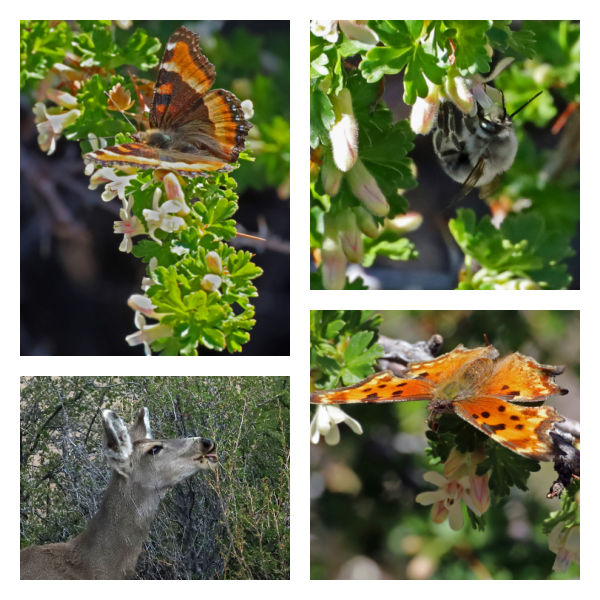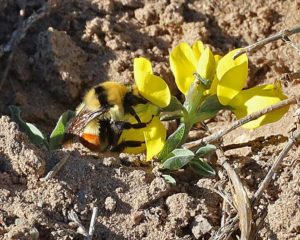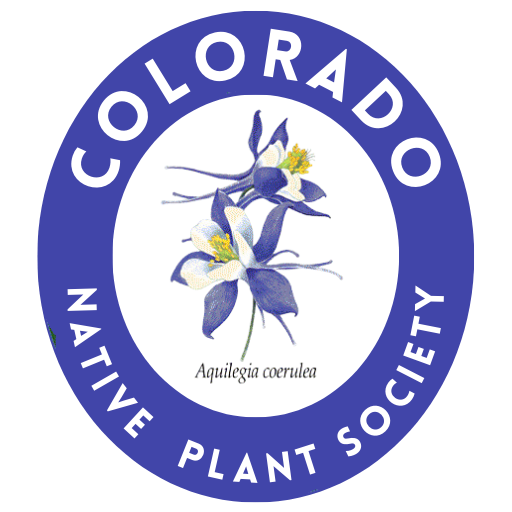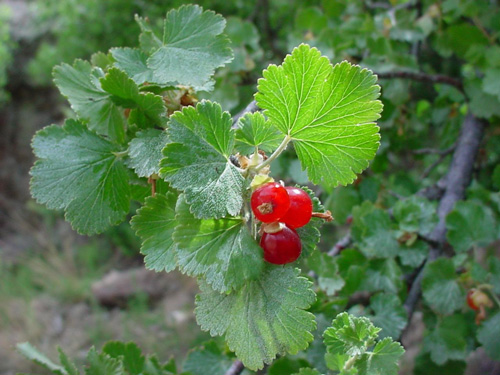Early this week the native gooseberry began to bloom. Immediately the shrubs were filled with pollinators including native bees (Osmia spp., and Anthophora spp.), syrphid flies, flies, and butterflies (thicket hairstreak, Milbert’s tortoiseshell, hoary comma). Also, I photographed the mule deer browsing on this armed gooseberry. You can almost see her lifting her lips to avoid the thorns. It was amazing to witness just how fast the shrubs were covered in pollinators. Here are the photos captured on the trumpet gooseberry- Ribes leptanthum.

Native gooseberry, (Ribes leptanthum) brings in a wide variety of pollinators – and more!
Photos ©Carol English
And there is more to the story. As we walked up the hill from the blooming gooseberry, I stopped and observed as I often do. I suddenly noticed an Anthophora bee buzz into a hole in the hillside. So I was able to watch these bees pollinating the gooseberry and subsequently fly into their underground nest which is made of very sandy soil.

Colorful native Hunt’s Bumble Bee on Golden Banner. This flower requires a bee that is heavy enough to push down the keel and get to the stamens and nectar.
©Carol English
And the golden banner is blooming close to the Anthophora bee nests. I know that the flowers on this plant require a bee that is heavy enough to push down the keel and get to the stamens and nectar. Last evening I was searching again for the Anthophora nests and I loud buzzing insect flew by. I think it was a queen Bombus huntii. Sure enough, I found her on the golden banner. I suppose the moral of this story is this- when you walk stop often, pause, and look around. You will find amazing natural phenomena happening. How astounding and complex this planet is.
Carol English
Native Plant Master

